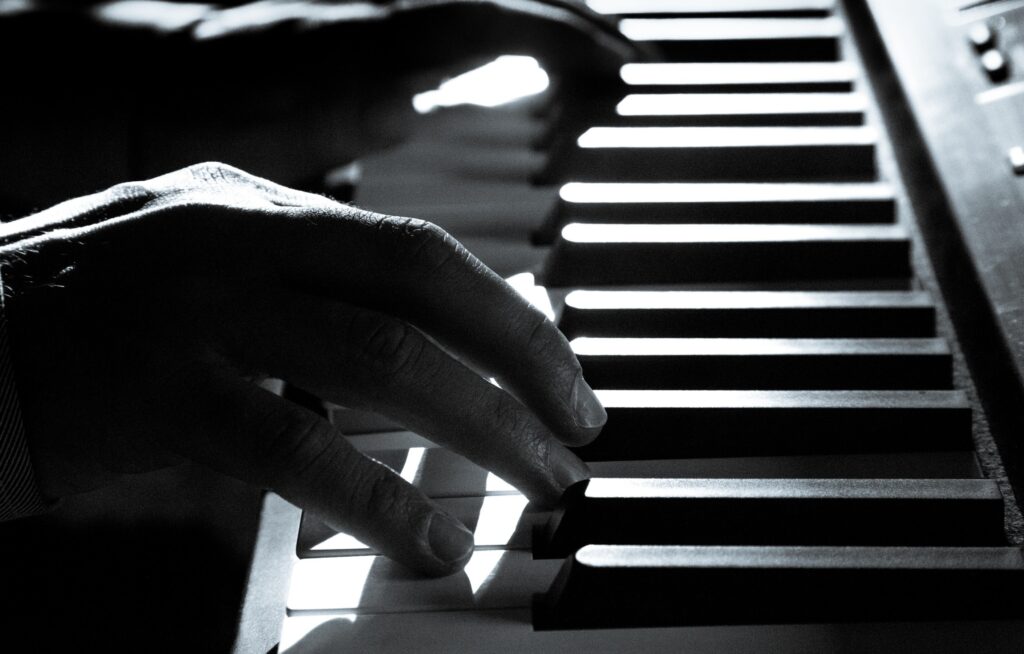Piano boogie-woogie is a style of music that is characterized by its driving, repetitive bass line and fast-paced, syncopated rhythms. This style of music originated in the southern United States in the late 19th and early 20th centuries and was heavily influenced by African American music, particularly gospel, ragtime, and the blues.
The origins of boogie-woogie can be traced back to the late 19th century, when African American communities in the southern United States began to develop a unique style of music that incorporated elements of gospel and blues. This style of music, known as “barrelhouse” or “barroom” piano, was characterized by its fast-paced, syncopated rhythms and its use of the left hand to create a steady bass line.
Want to learn how to play piano blues and boogie woogie but don’t know what piano to buy? The Alesis Recital Pro is only around £300-350 and is a fantastic digital piano to get you started. With the full 88 weighted piano keys you have everything you need to get started and much more! With an in-built recording system and additional sounds like organ, strings and electric piano – the Alesis Recital Pro is the perfect instrument for beginners AND advanced players!
The beginnings of boogie woogie piano
One of the most important figures in the development of boogie-woogie was a man named Pinetop Smith. Smith was a pianist and singer who was born in 1904 in Troy, Alabama. He is credited with creating the first recorded boogie-woogie song, “Pinetop’s Boogie Woogie” in 1928. The song was a hit and it brought the boogie-woogie style to the attention of a wider audience.
Another notable figure in the world of boogie-woogie is a man named Meade Lux Lewis. Lewis was a Chicago-based pianist known for his boogie-woogie playing. His most famous composition, “Honky Tonk Train Blues,” was recorded in 1927 and is considered a classic of the genre. Lewis was one of the most accomplished boogie-woogie pianists of his time and his music had a big influence on other musicians.
Early 20th century boogie woogie
Boogie-woogie music was particularly popular in the 1920s and 1930s, and it had a big influence on the development of other genres of music such as jazz and swing. Musicians like Albert Ammons, Pete Johnson and Clarence “Pine Top” Smith were some of the most important figures in the development of boogie-woogie and jazz, and their music helped to popularize the genre to a wider audience.

Boogie-woogie was also a major influence on the development of rock and roll. Musicians like Jerry Lee Lewis, Little Richard, and Ray Charles all drew inspiration from boogie-woogie. Their music helped to popularize the genre to a wider audience and is still listened too and adored to this very day!
In the present day, boogie-woogie is still played and appreciated by many musicians and music lovers. There are various festivals and events dedicated to the style and many talented musicians who continue to perform and record boogie-woogie music.
In conclusion, piano boogie-woogie is a vital and influential style of music that has shaped the course of American popular music. From its roots in the southern United States to its impact on jazz, swing, rock and roll, the genre has left a lasting legacy that continues to be celebrated today. Boogie-woogie piano is a true American art form, and it continues to inspire musicians and audiences alike.
Learn to play piano blues online with me
My online blues course teaches blues piano from scratch and builds your ability in a modular way. As you progress through the course, you’ll learn left hands, right hands, bridges and endings which you’ll use together to make your own blues piano compositions. I’ll show you the blues scale early on, giving you everything you need to start improvising – and we’ll progress to advanced licks and an impressive tutorial song to consolidate your new skills. Finally, we’ll move onto some popular blues songs, including music by the great Jerry Lee Lewis and my own personal favourite, Ray Charles.
I charge just £19.99 for 6 full months access, with 58 videos and counting – that’s less than the cost of a single piano lesson! – and I offer a 100% satisfaction money back guarantee.

Leave a Reply